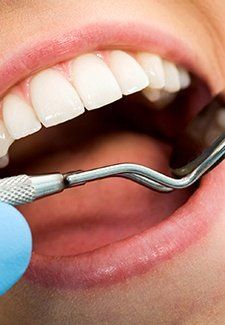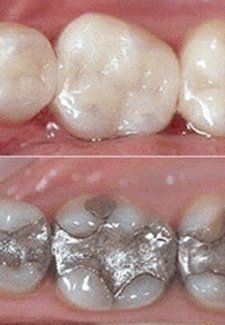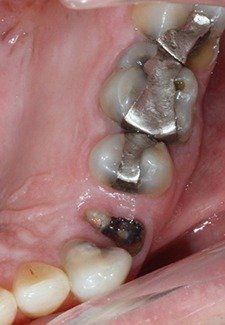,
This is a placeholder for the Yext Knolwedge Tags. This message will not appear on the live site, but only within the editor. The Yext Knowledge Tags are successfully installed and will be added to the website.
Mercury-Free Dentistry
Mercury-Free Dentistry
This is a placeholder for the Yext Knolwedge Tags. This message will not appear on the live site, but only within the editor. The Yext Knowledge Tags are successfully installed and will be added to the website.
Hours:
This is a placeholder for the Yext Knolwedge Tags. This message will not appear on the live site, but only within the editor. The Yext Knowledge Tags are successfully installed and will be added to the website.
Mercury-Free Dental Restorations Without the Risk
Mercury-free dentistry is a controversial topic in the dental community. There are those who support amalgam/silver fillings and those who oppose its use. Scott Udoff DMD PC wants to give our patients all the information you need to make an informed decision regarding this matter.
Our Middletown, NY, dental office practices holistic, minimally invasive dentistry that prioritizes whole-body health, which is why we are committed to mercury-free dentistry. If you have any questions, you are always welcome to contact us.
Composite/Bonded Restorations
These types of restorations, otherwise known as non-metallic fillings, are the alternative to amalgam restoration. Composite fillings are comprised of a tooth-colored resin material. These composite filling materials are bonded to the tooth. The bonding occurs through first cleaning out the prepared tooth, adding a layer of bonding material to the prepped tooth, and then placing and bonding the composite to the tooth.
The advantages of composite restorations are non-toxic metals, blended natural aesthetics, and minimal tooth preparation.
Mercury-Silver Amalgam Fillings
Having been in use in dentistry for 165 years, mercury alloy restorations are 42.5% mercury. The remaining percentage is silver, cooper, tin, and zinc. As a vapor, metallic mercury could be inhaled and absorbed through the alveoli in the lungs at 80% efficiency. It is the main route of entry of mercury into the human body, whereas the absorption of pieces of metallic mercury through skin or via the gastrointestinal tract is very poor. Thus, during the removal of the amalgam-mercury fillings is when the patient has an excessive exposure to mercury.
Mercury is a known and documented neurotoxin. This means that mercury causes damage to the nerve tissue. Here is a list of some of the common symptoms of mercury toxicity developing from mercury fillings.
- Asthma
- Bronchitis
- Breathlessness
- Persistent cough
- Bad breath
- Fibromyalgia
- Chronic fatigue
- Poor memory
- Difficulty multitasking
- Inability to concentrate
- Difficulty in finding words
- Lack of motivation
- MS
- Heart disease
Thankfully, Dr. Udoff has a tried-and-true approach for safely removing amalgam restorations. He follows the SMART protocol.
Due to mercury vapor being released from removal of amalgam fillings, we use equipment to minimize the removal of amalgam restorations. Here are the steps our team takes to elevate success:
- We use an oral high-volume air filtration system to remove mercury vapor aerosol particles from the work area
- We use an amalgam separator to remove any amalgam fragments that could enter the environment
- We use a high-speed evacuation system to catch/prevent the ingestion of amalgam particles, as well as a rubber dam
- We use large amounts of water to keep the tooth and the restoration cool
- We cut restorations into chunks to minimize expose to mercury vapor
- We protect patients with gowns to minimize the contamination of clothes
- Dr. Udoff and his assistant will both wear personal protective attire, including charcoal impregnated face respirators
Get Mercury-Free Fillings
Call now!
(845) 400-9144
(845) 400-9144
Dr. Udoff and his staff are phenomenal! With all that is happening with COVID, they have risen above it all. All are professional, kind, and considerate — a bright spot in these dark times!
- Diane Ezzo, Google
VISIT US
,
This is a placeholder for the Yext Knolwedge Tags. This message will not appear on the live site, but only within the editor. The Yext Knowledge Tags are successfully installed and will be added to the website.
This is a placeholder for the Yext Knolwedge Tags. This message will not appear on the live site, but only within the editor. The Yext Knowledge Tags are successfully installed and will be added to the website.
HOURS
- Sunday
- Closed
- Mon, Thu
- -
- Tuesday
- -
- Wednesday
- -
- Fri - Sat
- Closed
Monday
Tuesday
Wednesday
Thursday
Friday
Saturday
Sunday
This is a placeholder for the Yext Knolwedge Tags. This message will not appear on the live site, but only within the editor. The Yext Knowledge Tags are successfully installed and will be added to the website.
Monday
Tuesday
Wednesday
Thursday
Friday
Saturday
Sunday
This is a placeholder for the Yext Knolwedge Tags. This message will not appear on the live site, but only within the editor. The Yext Knowledge Tags are successfully installed and will be added to the website.
CONTACT US
This is a placeholder for the Yext Knolwedge Tags. This message will not appear on the live site, but only within the editor. The Yext Knowledge Tags are successfully installed and will be added to the website.
This is a placeholder for the Yext Knolwedge Tags. This message will not appear on the live site, but only within the editor. The Yext Knowledge Tags are successfully installed and will be added to the website.
Hi. Do you need any help?
Privacy Policy
| Do Not Share My Information
| Conditions of Use
| Notice and Take Down Policy
| Website Accessibility Policy
© 2025
The content on this website is owned by us and our licensors. Do not copy any content (including images) without our consent.




Share On: